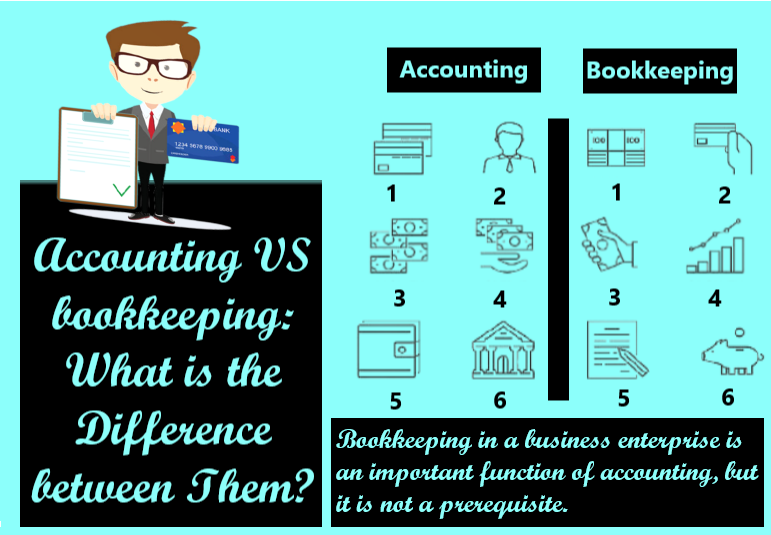Accounting is the process of recording all financial transactions of a business. Accountants are responsible for recording, filing and organizing all financial transactions that occur in the course of business activities. Bookkeeping is not the same as accounting. Now the question is what accounting bookkeeping is or what is the process of accounting and bookkeeping? Accounting is the process of preparing financial accounts and statements from the books of accounts maintained by bookkeepers.
Accounting VS Bookkeeping: What is the Difference Between Them?

- Bookkeeping in a business enterprise is an important function of accounting, but it is not a prerequisite. The accountant collects the records of each financial transaction, records the transaction in the general ledger, classifies each transaction into one or more debits and one or more credits, and categorizes the transaction according to the company’s chart of accounts.
- All financial transactions must be recorded but summarized at the end of a period. Some businesses may be required to report quarterly. Other smaller businesses may only need these reports at the end of the year in order to prepare for tax payments.
- An accountant analyzes, reviews, interprets and reports on the financial information of a business corporation at the end of the reporting period.
- Accountants are also responsible for preparing the company’s financial statements and related accounts.
Tips for Choose Simple Accounting System
Small businesses may choose to use a simple accounting system that records each financial transaction in the same manner as a chequebook. Businesses with more complex financial transactions usually choose double-entry bookkeeping.
Financial transactions
Accounting is the recording of all financial transactions, from the opening to the closing of a business. Depending on the type of accounting system used by a company, each financial transaction is recorded on the basis of documentary evidence. These documents can be receipts, invoices, purchase orders or other similar financial documents that prove that the transaction took place.
Need to set up a Company’s Accounting System
- The first decision you need to make when setting up an accounting bookkeeping service is whether you want to use the cash or accrual method of accounting. If you have a small one-person family business or a large one-person consulting firm, you may want to stick with the cash basis of accounting2.
- If you use cash accounting, you record transactions as funds are transferred. With accrual accounting, you record purchases and sales immediately, even if the funds are not transferred until later. So, Some businesses start out using cash accounting and move to accrual accounting as they grow.
Main Summary
To do effective accounting, you need to understand the major accounts of a business. These accounts, and their subordinate accounts, make up the company’s chart of accounts. So, The accounts that make up a company’s balance sheet are assets, liabilities and equity.
Abstracts
Assets are everything a company owns, such as stocks and receivables. Assets also include fixed assets, which typically include plant, equipment and land. On the balance sheet, asset accounts are arranged in order of liquidity. The asset accounts begin with the cash account because cash is fully liquid. The cash account is followed by the inventory account, the receivables account and the fixed assets account. These are all tangible assets. They can be touched. So, The company also has intangible assets that can be recorded on the balance sheet, such as customer goodwill.
Final Thoughts
Liabilities are the debts of the business – all debts on the balance sheet, including debts to suppliers, bank and business loans, and mortgages. There are two types of liability items on the balance sheet: current and non-current liability. Current liabilities generally consist of account payable and accrued liability. So, Current liabilities generally include accounts payable to the company’s suppliers, credit cards and bank loans.
 Posting Point
Posting Point

